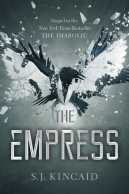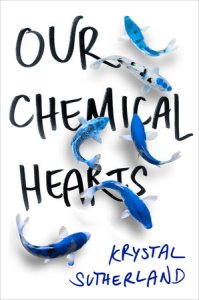 And then there are those sequels I can’t not read.
And then there are those sequels I can’t not read.
I just posted about making time for sequels (or not), and then I found myself devouring a complete trilogy in just a couple of weeks. That’s rare enough, but add to that the fact that it was a fantasy story (not my usual genre), and you have something so odd that I thought it deserved its own blog post.
It all started when I wanted to share one of my old favorites with my daughter. Goose Girl by Shannon Hale is a fairy tale retelling that I fell in love with years ago. In the story, Princess Ani is on her way to the Kingdom of Bayern where she will marry the prince. Because that’s what princesses do. Various things go wrong that I won’t spoil for you because you should read it for yourself, and Ani finds herself on her own and not sure who to trust.
 As I was reading Goose Girl aloud to my ten-year-old, I started thinking about all the stories that start with princesses (or other noble ladies) facing arranged marriages. The librarian in me thought that might make a good list or maybe display, so I decided to see how many I could find. Somewhere along the way, I came across a book called The Kiss of Deception by Mary Pearson. It sounded interesting.
As I was reading Goose Girl aloud to my ten-year-old, I started thinking about all the stories that start with princesses (or other noble ladies) facing arranged marriages. The librarian in me thought that might make a good list or maybe display, so I decided to see how many I could find. Somewhere along the way, I came across a book called The Kiss of Deception by Mary Pearson. It sounded interesting.
The SLJ review was pretty glowing: “Romance, adventure, mysticism-this book has it all and it just may be the next YA blockbuster.” So I placed the library hold and waited.
When the book came in eventually, I shrugged. Why did I want to read this again? I couldn’t remember. I hardly ever read fantasy. But I gave it a chance. Why not?
It began rather ominously:
“Today was the day a thousand dreams would die and a single dream would be born. The wind knew. It was the first of June, but cold gusts bit at the hilltop citadelle as fiercely as deepest winter, shaking the windows with curses and winding through drafty halls with warning whispers. There was no escaping what was to come. For good or bad, the hours were closing in.”
Something about the richly descriptive prose or the fascinating world held me captive as a reader. I could hardly put it down. My heart pounded along with Princess Arabella’s as she fled an arranged marriage to someone she’d never met. I was riveted to the pages as she made a new identity for herself, and I stressed big time as I read about the two strangers who arrived in town since I knew what the princess didn’t: one was an assassin sent to kill her and one was the prince she might have married. Unfortunately, neither of us knows which is which for much of the book.
 When the book ended, I felt like my interest in the story was far from sated. I needed book two like I’ve never needed a sequel before, maybe ever. The few days it took to get it from the library felt like a lifetime, and once I had my hands on it, I gobbled up the story as fast as I could. I was thrilled to find out that I didn’t have to wait for book three. It was checked in at my library. I was less thrilled to discover that it was nearly 700 pages, but that wasn’t going to stop me from following Princess Lia’s story wherever it took me.
When the book ended, I felt like my interest in the story was far from sated. I needed book two like I’ve never needed a sequel before, maybe ever. The few days it took to get it from the library felt like a lifetime, and once I had my hands on it, I gobbled up the story as fast as I could. I was thrilled to find out that I didn’t have to wait for book three. It was checked in at my library. I was less thrilled to discover that it was nearly 700 pages, but that wasn’t going to stop me from following Princess Lia’s story wherever it took me.
Having finished the trilogy now, I’m left wondering what to do with myself. I’ve spent weeks immersed in this world of destiny, deception, and danger. How will I go on when this story has ended?
At least I still have Goose Girl and its sequels to read with my daughter as she discovers the magic of a story in which a girl makes her own way and doesn’t let anyone tell her what to do.


 I rarely read sequels. Who has time for that? (Says the person who has also posted about rereading books multiple times just ‘cause.) The truth is that no matter what I say about lack of time, if I really want to read something, I’ll make the time . . .eventually. If I am being honest, I would say that I rarely bother with sequels because they are usually disappointing.
I rarely read sequels. Who has time for that? (Says the person who has also posted about rereading books multiple times just ‘cause.) The truth is that no matter what I say about lack of time, if I really want to read something, I’ll make the time . . .eventually. If I am being honest, I would say that I rarely bother with sequels because they are usually disappointing. Thunderhead (sequel to Scythe) by Neal Shusterman – Both Scythe and Thunderhead were rather outside of my usual choices, but I could not put either of them down. Seriously, if you like dystopian novels that explore ethics and ideas while telling a story that is brutal and compelling, you need to read both of these books. Actually the School Library Journal called Thunderhead, “A rare sequel that is even better than the first book.” I’m not sure I’d go that far myself, but I will say that I will absolutely be reading the third installment as soon as it comes out, which is a super rarity for me.
Thunderhead (sequel to Scythe) by Neal Shusterman – Both Scythe and Thunderhead were rather outside of my usual choices, but I could not put either of them down. Seriously, if you like dystopian novels that explore ethics and ideas while telling a story that is brutal and compelling, you need to read both of these books. Actually the School Library Journal called Thunderhead, “A rare sequel that is even better than the first book.” I’m not sure I’d go that far myself, but I will say that I will absolutely be reading the third installment as soon as it comes out, which is a super rarity for me. The Empress (sequel to The Diabolic) by S.J. Kincaid – Perhaps a bit like Scythe and Thunderhead, this science fiction story explores big ideas (what is personhood, science vs. religion, etc.) in a world that is harsh and full of deception. But here the focus is on the political intrigue at the emperor’s court where Nemesis, a genetically engineered bodyguard, is sent to impersonate a Senator’s daughter to protect her. There are unexpected twists and turns in both books, and by the end of The Empress, I am not even sure what to expect for the third book.
The Empress (sequel to The Diabolic) by S.J. Kincaid – Perhaps a bit like Scythe and Thunderhead, this science fiction story explores big ideas (what is personhood, science vs. religion, etc.) in a world that is harsh and full of deception. But here the focus is on the political intrigue at the emperor’s court where Nemesis, a genetically engineered bodyguard, is sent to impersonate a Senator’s daughter to protect her. There are unexpected twists and turns in both books, and by the end of The Empress, I am not even sure what to expect for the third book. There are two types of people in the world: people who reread books and people who don’t.
There are two types of people in the world: people who reread books and people who don’t. In addition to the teen romances I mentioned above, my next choice for a comfort read is historical fiction. I’ve blogged about my interest in historical fiction often enough that this probably doesn’t surprise anyone. But there is something I find incredibly comforting in getting completely out of your own time period. I have recently reread a couple of favorites: The Lost Girl of Astor Street (historical mystery/romance) and No Shame No Fear (historical/romance), and I can highly recommend both to readers whose tastes run similar to mine. ;)
In addition to the teen romances I mentioned above, my next choice for a comfort read is historical fiction. I’ve blogged about my interest in historical fiction often enough that this probably doesn’t surprise anyone. But there is something I find incredibly comforting in getting completely out of your own time period. I have recently reread a couple of favorites: The Lost Girl of Astor Street (historical mystery/romance) and No Shame No Fear (historical/romance), and I can highly recommend both to readers whose tastes run similar to mine. ;) If a book that can be described as “a history lesson” sounds as enticing to you as it does to me, you might like Through the Barricades by
If a book that can be described as “a history lesson” sounds as enticing to you as it does to me, you might like Through the Barricades by  I was thinking about this as I read Gabi, A Girl in Pieces by
I was thinking about this as I read Gabi, A Girl in Pieces by  My daughter, a third-grader, is far from reading these teen novels, but she could “feel the words” in Juana & Lucas by
My daughter, a third-grader, is far from reading these teen novels, but she could “feel the words” in Juana & Lucas by  I also made sure to share I’m New Here by
I also made sure to share I’m New Here by 
 If you’re looking for a happily ever after, that was my last post. This one is about
If you’re looking for a happily ever after, that was my last post. This one is about  You may recall that
You may recall that 



 Shark Girl by
Shark Girl by